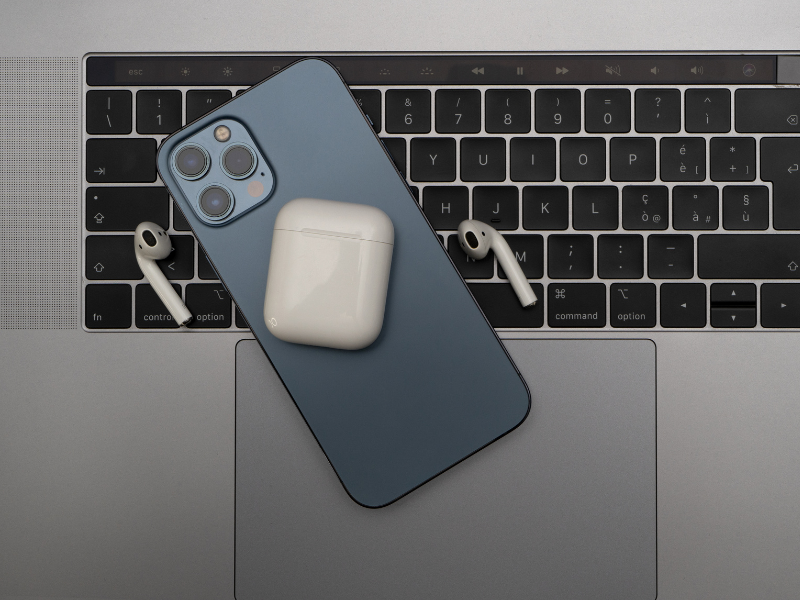
Spotting Counterfeit iPhone Accessories: Tips and Tricks
Share
When buying iPhone accessories, we all want the best for our device, but what happens when you find yourself staring at a potential counterfeit product? It’s an unfortunate truth that fake iPhone accessories are out there, so how can you avoid being taken for a ride?

In this blog post, we’ll be exploring the tips and tricks to help you spot counterfeit phone accessories so that you can be sure of what you’re buying. We’ll also look at how to protect yourself from scams when shopping online.
Research the Seller
Before you purchase any iPhone accessories, make sure to research the brand and seller. Check for reviews from previous customers, check if the company has an official website, and read up on the product description to ensure that it is an authentic item.
Additionally, make sure you are purchasing the item from an approved retailer. While at it, watch out for phony or malicious websites attempting to steal your private information.
Does the seller accept returns? What about faulty products?
If the seller is not willing to accept returns or deal with faulty products, then this is a clear sign of a counterfeit item.
Money-back guarantees and warranty information can also be helpful in ensuring you’re getting a genuine item.
Compare Prices
Compare prices of genuine versus counterfeit iPhone accessories to determine their accuracy. If the cost of a product is drastically lower than what you would expect for that particular accessory, then it’s time to question its authenticity. While there are plenty of great deals out there, prices that are too good to be true usually are.

The real deal is often more expensive, so it’s best to be prepared to pay a bit extra for quality products.
Examine Product Quality & Materials
Genuine products are made with higher-quality materials that have a longer lifespan than their counterfeit counterparts.
Pay attention to texture when inspecting iPhone accessories as well – many counterfeits can be made with sub-par materials that feel overly lightweight or break quickly. Genuine items are typically heavier and more durable. For instance, if a charger looks and feels flimsy, there's a good chance that it is not original.
Check the packaging of your iPhone accessory to ensure it’s intact and free from tampering. Counterfeiters often use sloppy packaging or altered product information to pass off their knock-offs as genuine products. Ensure all seals are unbroken and contact the manufacturer if there are any discrepancies.
Look for Unusual Packaging
Be suspicious if the item looks odd or doesn't match your purchased product. Many counterfeiters will try to pass off their products as genuine by using generic labels and logos on the packaging. Authentic products typically have detailed instructions printed on them or come with a store warranty card inside the box.
Also, check out the serial numbers and barcodes to see if they match the product information. Fake products may have incorrect serial numbers or bar codes that don’t correspond with what is listed on the product.
Check for Serial or Model Numbers
Many iPhone accessories, like headsets and chargers, come with unique serial or model numbers printed on the packaging.
Before purchasing any new iPhone accessories, compare your product's serial or model number against what’s listed on the manufacturer’s website. If it doesn’t match up, there’s a good chance it’s not genuine. Don’t forget to look out for any misspellings or typos that may be present, as these are telltale signs of a fake product.
At the end of the day, trust your instincts when it comes to spotting counterfeit iPhone cases, lenses and other types of accessories. As long as you do some research, compare prices, and examine the product quality, you should be able to avoid any shady deals.
Get in touch with the seller's customer service.
Another crucial factor when it comes to spotting counterfeit products is customer service. Authentic retailers will generally take the time to answer your questions and provide support for their products. If a seller isn’t willing to help you out or doesn’t seem knowledgeable about the product, then it’s probably best to steer clear of that particular item.
It’s also worth noting that some counterfeiters may have anonymous customer service lines, making it even more difficult to speak with someone regarding your product. If you can’t find any information about the seller or their contact details are suspicious, then it’s best to avoid this product altogether.
Final Thoughts
We hope this guide has given you some insight into how to identify counterfeit iPhone accessories. With just a few simple steps, you can make sure that you’re getting the genuine product and not falling victim to shady deals.
